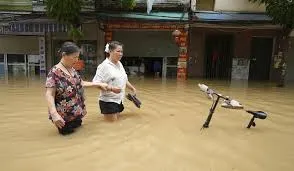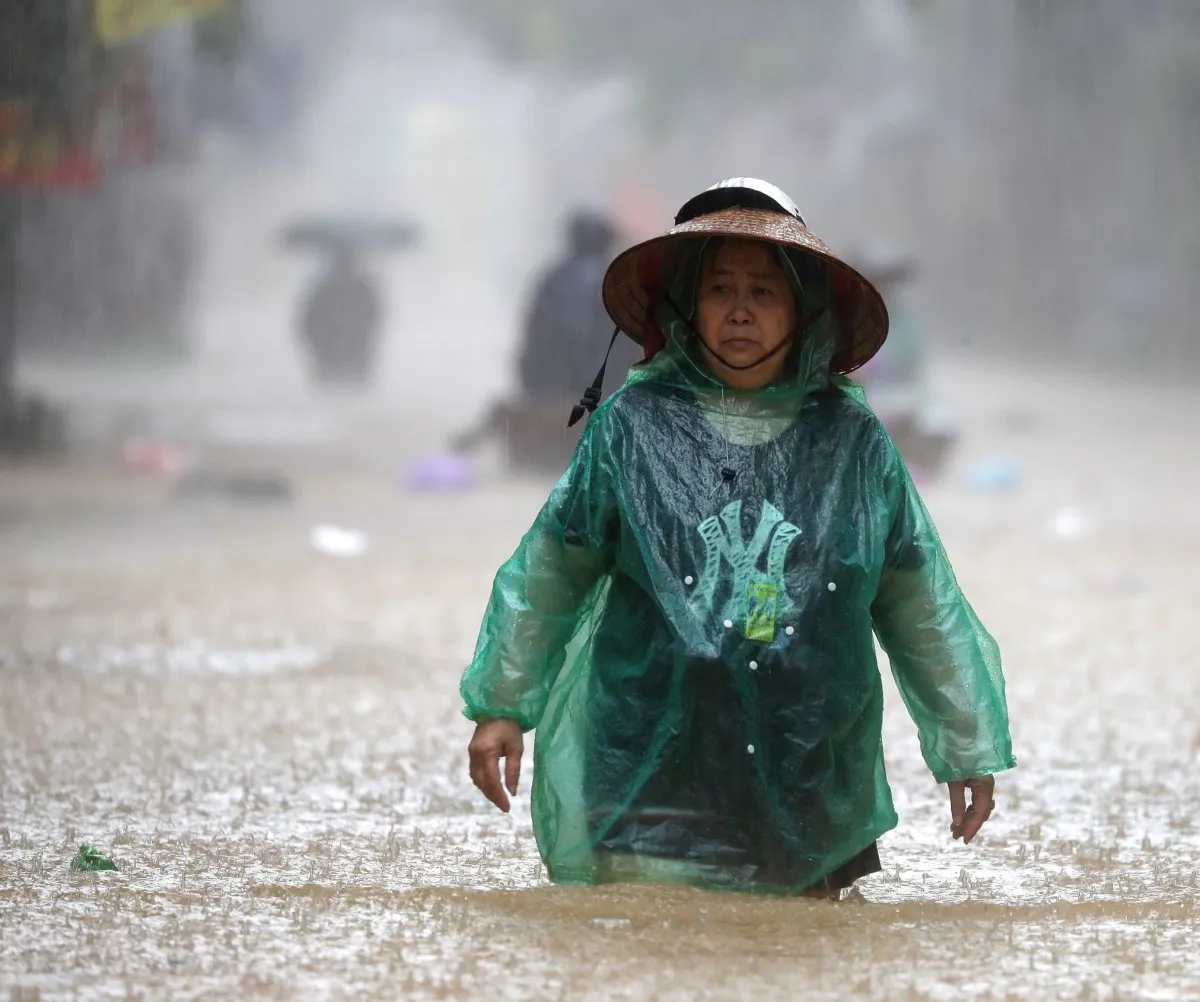killing more than 170 people in Typhoon
The government estimates that the typhoon and subsequent landslides and floods killed 179 people, with another 145 missing.

Typhoon Yagi, the most powerful storm to hit Asia this year, has wrecked havoc in Vietnam, leaving a trail of damage and killing at least 179 people.
As the Red River rose to a 20-year high, hundreds of Hanoi residents were forced to leave their houses, leaving streets swamped in water.
The storm, which made landfall on Saturday in the country’s north, delivered torrential rains and high winds, causing widespread floods and landslides. The deluge caused extensive damage to infrastructure, including the collapse of a bridge on Monday.
A torrent of water tumbling down a mountain in Lao Cai province buried the village of Lang Nu on Tuesday, killing 16 people and leaving scores missing, according to The Guardian, which cited local media on Wednesday.
As a result of the flooding, Hanoi schools have been forced to close for the remainder of the week, and thousands of low-lying households have been evacuated for safety.
While the state-run power utility, EVN, reported on Wednesday that it had turned off power to several flooded sections of the capital for safety reasons.

According to Mai Van Khiem, head of the National Centre for Hydro-Meteorological Forecasting, the Red River has reached its highest level in two decades, with further rain predicted over the next two days.
The government estimates that the typhoon and subsequent landslides and floods killed 179 people, with another 145 missing.
The Blue Dragon Children’s Foundation, a charity, evacuated its building on Tuesday after authorities issued flood warnings. Reuters said that spokeswoman Carlota Torres Lliro voiced concern for the dozens of youngsters and families living in makeshift dwellings along the river.
EVN also claimed that it has halted water discharge from the Hoa Binh hydropower dam, northern Vietnam’s second largest, onto the Da River, a tributary of the Red River, in order to minimize water flow.
Furthermore, Vietnamese authorities have expressed worries about Chinese hydroelectric facilities spilling water into another tributary of the Red River, the Lo River (known in China as Panlongjiang), despite Beijing’s assertion that the two countries cooperate on flood protection.
ALSO READ : Harris defended the economic policies in a high-stakes first interview
Harris defended the economic policies in a high-stakes first interview

LINK :Harris defended the economic policies in a high-stakes first interview
In her first interview since becoming the Democratic presidential nominee, US Vice President Kamala Harris defended her economic and immigration record and also attacked former President Donald Trump.
Ms. Harris claimed that the Biden administration was able to “recover the economy” after the pandemic and that illegal border crossings have decreased in recent months.
“My house’s first story is entirely submerged. “We now have no fresh water or electricity,” Nguyen Duc Tam, a 40-year-old resident of Thai Nguyen, around 60 kilometers (37 miles) from Hanoi, told Reuters.
Factory and warehouse operations in coastal industrial areas east of Hanoi have been badly impacted, with many forced to close, potentially affecting global supply networks.
Vietnam, which hosts important operations for global corporations, particularly those that export goods to the United States and Europe, may experience protracted production delays.
Heavy rainfall-caused landslides in regions north of the city have also claimed life. A bridge in Phu Tho province collapsed on Monday, and startling dashcam footage recorded a truck plunging into the river below.
Hoang Hai Luan, 30, claimed he had not seen such floods in the area in over 20 years, adding, “My belongings and possibly those of many others are completely lost,” according to Reuters.
Despite the massive devastation, a big Samsung Electronics plant on the outskirts of the city, which distributes around half of its cellphones globally from Vietnam, showed no evidence of flooding, according to a Reuters witness.

However, the disastrous effects of Yagi reach far beyond Vietnam’s boundaries. As a key manufacturing base for multinational firms, the storm’s disruptions are expected to spread throughout worldwide supply systems.
Prior to striking Vietnam, Yagi caused devastation in southern China and the Philippines, killing and injuring many people.
Climate change has influenced the storm’s intensity and duration, as typhoons in the region form closer to the shore and intensify more quickly.



Pingback: Killing More Than 170 People In Typhoon
Pingback: Hong Kong Press Association Harassment Of Journalists